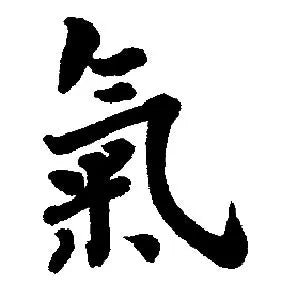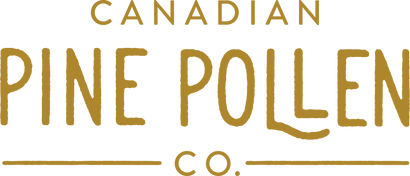Your Cart is Empty
Free Shipping In USA & CANADA $100+ | Duty Free in Europe €250+
Free Shipping In USA & CANADA $100+ | Duty Free in Europe €250+

Pine Pollen Health Benefits and Research
Pine Pollen Health Benefits & Research
Pine pollen is nature's superfood gone wild on steroids!
Much of the excitement regarding the benefits of pine pollen exist because of phytoandrogens. Pine pollen contains natural phytoandrogens; a functional source of plant based molecules that offer an alternate to synthetic or prescription hormone. Like phytoestrogens, these phytoandrogens play equal role in both aging men and women.
Brassinosteroids are found throughout the plant kingdom: in new growths, germinating seeds, and young vegetative tissues. Superfoods like wheat-grass juice, germinated broccoli seed, and certain sprouts have these nourishing plant hormones: they help detoxify and have anabolic impact on cell growth.
Rapid Growth During Germination


A partial list of pine pollen's other bioactive nutrients, antioxidants, and anti-inflammatory molecules includes:
The pollen grain carries everything it needs for germination. 15% amino acids, 1-2% lipids-sterols, various polyphenols and antioxidants, including 2% flavonoids, myoinositol, phosphatidylcholine, phosphatidylethanolamine, phosphatidylglycerol, phosphatidylserine, lignin, and various polysaccharides (complex sugars)—two of which are vital to immune health; arabinogalactan, and xylogalacturonan and on top of that boasts liver detoxifying agents like glutathione, MSM, SOD.
It also has vitamin D2/D3, magnesium, selenium, silicon, potassium, calcium, iron, strontium, phosphorus, sulphur, chlorine, manganese, and various other vitamins, minerals, and essential amino acids such as L-dopa and Arginine that help with blood flow and the nitric-oxide cycle.
Pine pollen health benefits come from a huge number of bioactive molecules needed for germination.
Pine pollen also has five other potent plant hormone compounds, required for germanaiton burst:Auxins, Cytokinins, Gibberellins, Ethylene, Abscisic acid- all with biological activity, such as; antiviral, anti-cancer, anabolic, pro-survival, stem cell/immune response activation, and anti-aging effects.
Pine Pollen Research
Human Trials, Animal Model, Cell Biology, and Biochemistry, Research with Pine Pollen's Phytoandrogens and Hormones:
- The Potential Effects and Use of Chinese Herbal Medicine Pine Pollen (Pinus pollen): A Bibliometric Analysis of Pharmacological and Clinical Studies (World J Tradit Chin Med. Shi-Bing Liang 2021 Jul 28.)
-
Clinical study of chrome-rich pine pollen in the treatment of type 2 diabetes, (Fang Zhaohui, see Translation 2019)
-
Analysis of pharmacological effects and clinical application of pine pollen. (Sheng wise et al, 2018)
-
Effects of Pine Pollen Extract in Relieving Hot Flushes in Sex Hormone-Deficienct Rats. (Thisayakorn, 2017)
-
Androgenic and Anabolic Effects of Pinus tabulaeformis Carr Pollen in Clarias gariepinus. (Ausussto S Jr, 2017)
-
Plant Hormone Cytokinins for Modulating Human Aging and Age-Related Diseases. (Jiří Voller, 2017)
-
The Plant Hormone Abscisic Acid is a Prosurvival Factor in Human and Murine Megakaryocytes. (Malara A, 2017)
-
Immune-Enhancing Effects of Taishan Pinus massoniana Pollen Polysaccharides on DNA Vaccine Expressing Bordetella avium ompA (Fujie Zhu, 2016)
-
Effect of pine pollen extract on experimental chronic arthritis; (Axenov-Gribanov DV, 2016)
-
Analysis of human food safety and laxative function of pine pollen Wen Ping Jing, 2016)
-
The protective effects of Masson pine pollen aqueous extract on CCl4-induced oxidative damage of human hepatic cells. Jin X, 2015)
-
Characterization and Biological Activity of Taishan Pinus massoniana Pollen Polysaccharide In Vitro (Shifa Yang, 2015)
-
Actinobacteria possessing antimicrobial and antioxidant activities isolated from the pollen of scots pine; (Gen-Xiang Mao, 2012)
-
Antiaging Effect of Pine Pollen in Human Diploid Fibroblasts and in a Mouse Model Induced by D-Galactose (Gen-Xiang Mao, 2012)
-
Pine pollen inhibits cell apoptosis-related protein expression in the cerebral cortex of mice with arsenic poisoning, Yanhong Luo, 2012)
-
Mechanisms of natural brassinosteroid-induced apoptosis of prostate cancer cells. Steigerová J, Food Chem Toxicol. 2012)
-
Brassinosteroids inhibit in vitro angiogenesis in human endothelial cells (LucieRárová, 2012)
- Brassinosteroids and analogs as neuroprotectors: Synthesis and structure–activity relationships Author (JihaneIsmaili, 2012)
-
Rapid effects of novel phytoandrogen adjuvant therapy (PAT) onmetabolic health: a gender, age and BMI matched case-control study (Ong YC, 2011)
-
Anabolic effect of plant brassinosteroids. (Debora Esposito, 2011)
-
Oxidative activation of indole-3-acetic acids to cytotoxic species— a potential new role for plant auxins in cancer therapy. (Lisa K.Folkes, 2011)
-
Brassinosteroids cause cell cycle arrest and apoptosis of human breast cancer cells. (Steigerová, 2010)
-
Anti-fatigue Effects of Flavone in Pinus Massoniana Pollen on Mice (WU Jing-jing,2010)
-
Antioxidant and antiinflammatory activity of pine pollen extract in vitro. (Lee KH. (2009)
-
Model Induced by D-Galactose Pine pollen polly-sacchrided on reactive oxygen species,(Lee KH1,2009)
-
The phytohormone auxin induces G1 cell-cycle arrest of human tumor cells. (Ester K, 2009)
-
Allergenicity and cross-reactivity of pine pollen. (Gastaminza G, et al. ,2009)
-
Anticancer and antiproliferative activity of natural brassinosteroids (JanaMalíková, 2008)
-
Abscisic acid is an endogenous stimulator of release from human pancreatic islets with cyclic ADP ribose as second messenger. Bruzzone S, 2008)
-
Antinociceptive and anti-inflammatory activities of pine (Pinus densiflora) pollen extract. ( Wang YM, 2007)
-
Effects of pine pollen polysaccharide and its sulfate on the production of ROS in cardiomyocytes (Geng Yue, 2007)
-
Effective Components and Pharmacological Function of Pine Pollen (He Xiaoyan, 2007)
-
Chen Wei; Study on Extraction and Determination of Choline in Pine Pollen ( Li Ying ;2006)
-
Pine pollen hits cell defense Yan Zhenli, 2006)
-
Analysis of pine pollen by using FTIR, SEM and energy-dispersive X-ray analysis. (Guang Pu, 2005)
-
Interventional effects of pine pollen in rats with hyperplasia of prostate, (T. Cong, 2005)
-
Analysis of pharmacological effects and clinical application of pine pollen in combination with other Chinese patent formulas in clinical trials. (In benign prostatic hyperplasia: Wang Fuchang, 2004, and in primary hypertention, Hu Guocan et al 2005)
-
The mechanism and clinical application of pine pollen. (Zhao Lixin, 2004)
- Transition from a botanical to a molecular classification in tree pollen allergy: implications for diagnosis and therapy. (Mothes N, .2004)
- Roux KH, Teuber SS, Sathe SK. Tree nut allergens. Int Arch Allergy Immunol. (2003)
- Multiple pollen sensitization: a molecular approach to the diagnosis. (Mari A, 2001)
- Biphasic effect of nitric oxide on male hormones and cyclic GMP production by purified rat Leydig cells cultured in vitro (Sandra Valenti, 2001)
- Pine pollen allergy in northern Arizona. (Freeman GL. 1993)
- Antiviral effect of brassinosteroids against herpes virus and arenaviruses. (Wachsman MB, 2000)
- Vitamin D and its metabolites in the pollen of pine. Part 5: Steroid hormones in the pollen of pine species. Pharmazie. (Saden-Krehula M, Tajíć M.1987)
- Vitamin D and its metabolites in the pollen of pine. Part 5: Steroid hormones in the pollen of pine species. (Saden-Krehula M, 1987)
- Test. and androgens in hormone in royal jelly. (J. Vittek, 1986)
- Bio-identical phytoandrogens in the pollen of Scotch pine P. silvestris L. (Li J, Zhang Z, 1971 )
- More on Pine Pollen Research

Traditional Chinese Medicine References
(Link To Chinese Medicine References to Pine pollen in Original Language)
- Han "Shen Nong's Herbal Classic": "(Songhus/ Song pollen) smells non-toxic, attending to congested cold and heat, benefiting urination, eliminating congestion, long-wearing light body and benefiting strength, extending the year."
- Songhua "Materia Medica Yanyi": "The flower on the yellow powder named Songhuang, on the mountain People pick it up in time, it is very good for soup, but it can't be preserved for a long time, so it is rarely used to send far... Song Huang is like Puhuang (Typha angustifolia pollen) but its taste is weak. Used in heat, headache, cheek in, dry mouth and lip, more annoyance, thirst, sullen and unhappy."
- Ming "Compendium of Materia Medica": "Songhua, sweet, warm, non-toxic. Run heart and lung, benefit Qi, in addition to wind and stop bleeding, can also brew."
- Qing "Materia Medica from the new": "Good acne acne scars and wet and rot"
- "With the interest of the diet spectrum": the winemakers nourish the blood.
- "Zhou Li" recorded "food science" (records of medicinal diets): As early as the pre-Qin period, ", and the relationship between diet and disease was philosophical The elaboration laid the medical theory of "treating the disease" in Chinese medicine. Later generations have combined the drugs that can be used for therapeutic treatment into various versions of "Therapeutic Herbal Medicine". In these monographs, there are records of using pine pollen to make soup, stuffing, steamed cake and wine making.
- Song "Mountain House Clearance": The book refers to the production of "song yellow cake": when the pine flower is powdered, the powder is added to the rice noodles, sealed by water and sealed for a few days, and then made into a cake like Gulong. The product "does not only scent, but also strengthens the mind."
- Ming "Fragography": "February growth in March and March, spend three or four inches, use cloth to spread the floor when opening, hit the core, name Songhuang, in addition to wind to stop bleeding, cure phlegm, and sugar for (pie ) Very fragrant, it is advisable to eat fast."
- In the Tang Dynasty, Zhang Wei’s "Makeup House" and Liu Wei's "Ling Table Record" wrote: Under the double-angle mountain of Baizhou in the Jin Dynasty, there is a beautiful man well, whoever drinks this well water, has more females at home. It is very beautiful, the reason is that there are pine flowers open all the year round, pollen falls into the well, people drink the well water with pollen to produce effect, so there are quite a lot of beautiful women.
- the Tang Dynasty poet Bai Juyi's "abdominal air advanced Songhua wine, Lotte knows the life without worry." and the Song Dynasty poet Su Dongpo's "a pound of pine flowers is indispensable, eight two Pu Huang Chemo fried, 槐花杏花 each five money, two Pounds of white honey together, eat well, bath is good, red and white until the old." Others have explained the peculiar use of pine pollen from different aspects.
- "Outline (?) ": Run the heart and lungs, benefit Qi, remove the wind, stop bleeding.
- "Materia Medica": treatment for a long time, hangover poison, blood heat.
- "The original experience of the original": In addition to rheumatism, treatment of acne sores.
- "Jiangsu Zhi Yao Zhi": prevention of sweat rash. Used as a wound hemostatic agent.
- "Sichuan Chinese Medicine": convergence to stop bleeding. Treatment of skin eczema, yellow water sores are not bad.
Subscribe
Sign up to get the latest on sales, new releases and more …
